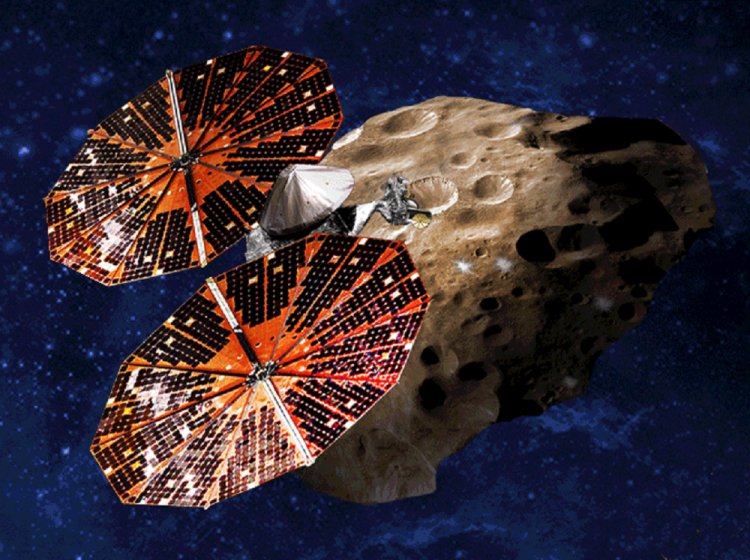Lucy now has its ninth asteroid to be studied in its more than a decade-long mission.
Lucy launched in October 2021 and is headed for the Trojan asteroids, which ride in Jupiter's orbit ahead of and behind the behemoth due to the immense gravity of the gas giant. Lucy will be the first man-made object to fly past one of these asteroids in 2027.
The swarms of Trojan asteroids linked with Jupiter are assumed to be remnants of the primordial material that created the outer planets, dating back more than 4 billion years. In a gravitational balancing act, the Sun and its largest planet stabilize the Trojans. These primitive bodies hold crucial clues to the solar system's history.
Lucy is the first spacecraft to investigate the Trojans. The mission is named after a fossilized human ancestor (dubbed "Lucy" by her discoverers) whose skeleton provided unique insight into the evolution of humanity. Similarly, the Lucy mission will transform our understanding of planetary origins and the formation of the solar system.
The dark-red P- and D-type Trojans are similar to those found in the Kuiper Belt of icy bodies beyond Neptune's orbit. C-type asteroids are mostly found in the outer reaches of the Main Belt of asteroids, between Mars and Jupiter.
Dark carbon compounds are thought to be abundant in all Trojans. They are most likely rich in water and other volatile substances beneath an insulating blanket of dust.
The mission was expected to operate past a main-belt asteroid before swinging through a complicated path of Trojan asteroids. And now, scientists have discovered that one of Lucy's original target asteroids has a companion: one more, the tiny asteroid that orbits it and that Lucy will be able to observe as well.
Lucy's third target is Polymele, a gourd-shaped space rock measuring about 13 miles (21 kilometers) from end to end. Polymele's shape is unusual for an asteroid, implying that it is a relic from the early solar system that has avoided collisions thus far.
In March, astronomers watching Polymele in preparation for Lucy's visit saw the asteroid pass in front of a star, blocking its distant light. During the process, they discovered something very strange: a tiny companion space rock.
That companion has no name and will not have one until scientists learn more about the asteroid's precise orbit, which may not happen until Lucy's visit. However, some astronomers have jokingly named it Shaun after the character from the animated film "Shaun the Sheep."
Shaun is the second space rock to be added to the Lucy mission's itinerary: in 2020, mission scientists discovered that the target asteroid Eurybates has a small companion.




